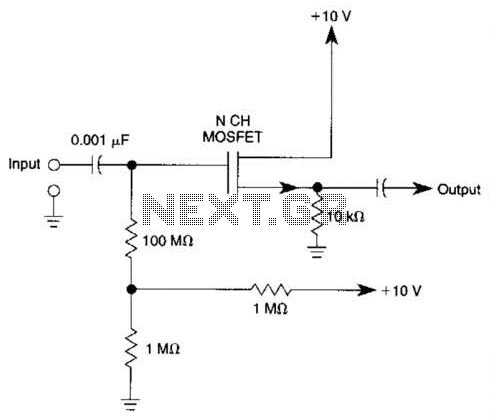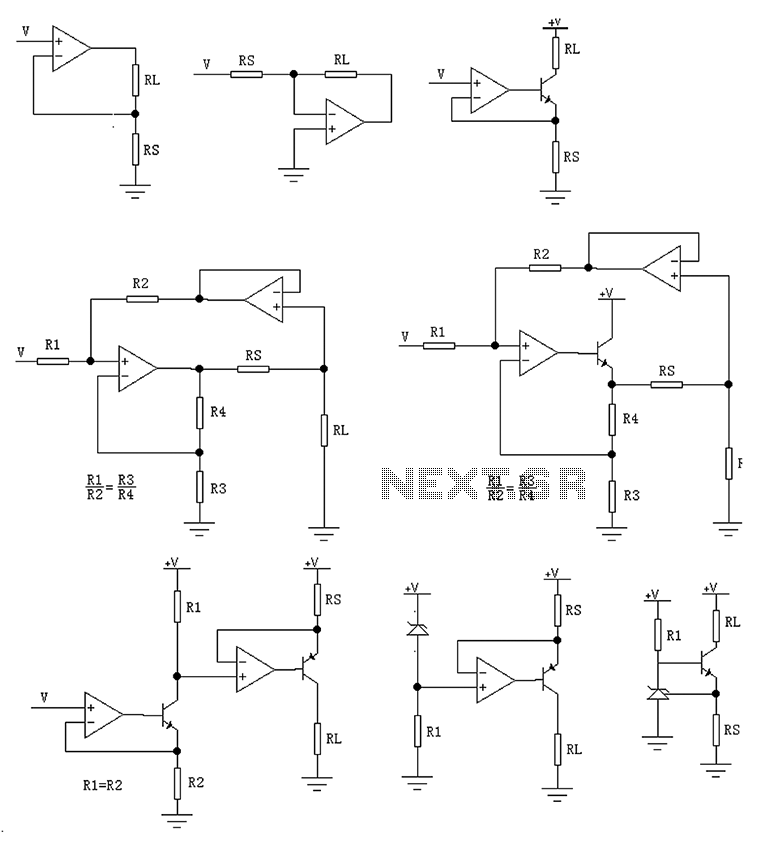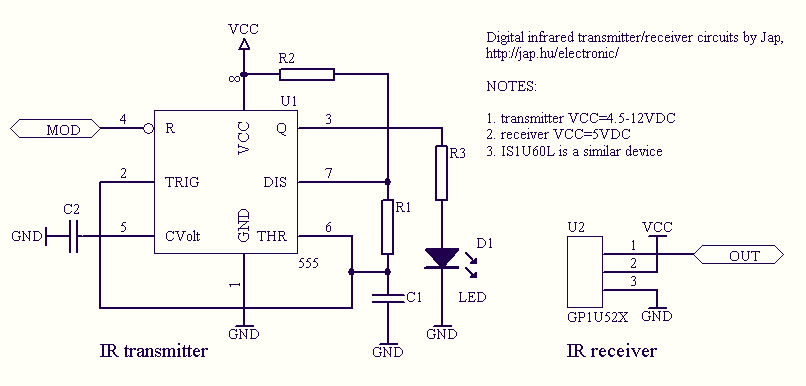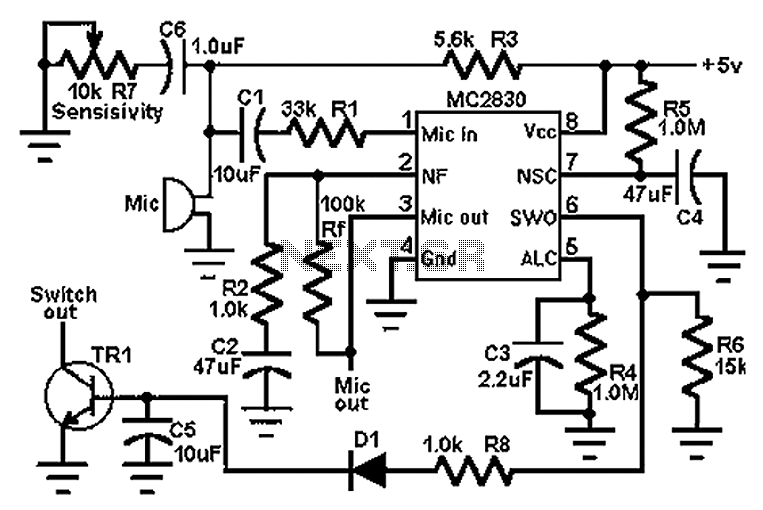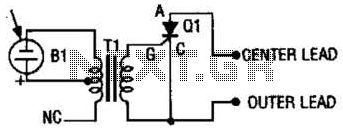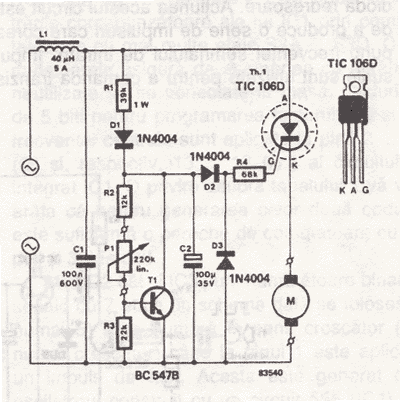
Large Lcd Display Buffering Driver Circuit
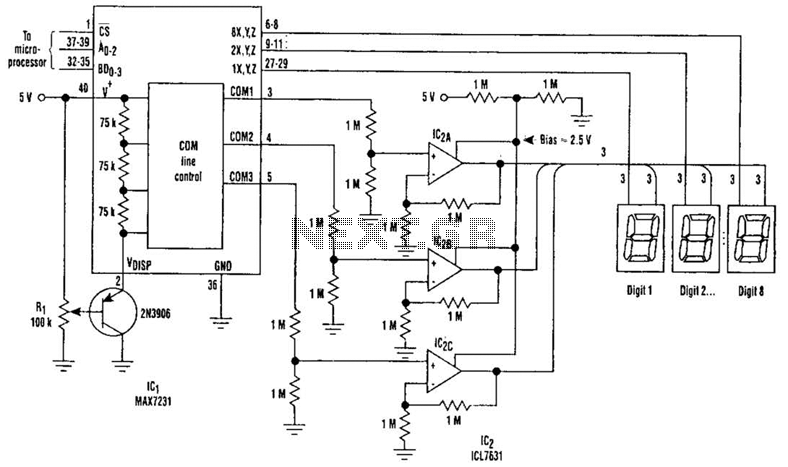
Large LCD devices with one or more displays exhibit significant driving capacitance to the driver circuits. To address this issue, the drive circuit incorporates a buffer amplifier for each of the three common lines. Each amplifier can be programmed independently for a quiescent current of 10 µA, 100 µA, or 1000 µA. In this application, the bias network applies a voltage that sets the three quiescent currents to 100 µA. The display driver and triple operational amplifier function between 5 V and ground, while the common signals vary from 5 V to approximately 1 V. To ensure that these signals remain within the amplifiers' common-mode range, the signals are attenuated by half, and the buffers operate at a gain of two. The circuit drives eight 1-inch displays and is suitable for ambient temperature variations of 15 °C or less. At the highest expected temperature, resistor R1 should be adjusted to ensure that no off segments are visible.
The circuit design incorporates a series of operational amplifiers configured as buffer amplifiers to effectively drive large LCD displays. Each buffer amplifier is strategically placed to manage the common lines, which helps to mitigate the effects of high driving capacitance. The ability to program each amplifier independently allows for fine-tuning of the quiescent current, which is essential for optimizing performance based on the specific requirements of the display.
The bias network plays a critical role by establishing a consistent voltage that sets the quiescent current to 100 µA across all three amplifiers. This uniformity helps maintain stable operation and ensures that the amplifiers function within their optimal ranges. The operational amplifiers are designed to operate within a voltage range of 5 V to ground, accommodating the varying common signals that range from 5 V down to approximately 1 V.
To protect the integrity of the signals processed by the amplifiers, an attenuation mechanism is employed, reducing the signal amplitude by half. This strategy ensures that the common-mode voltage remains within the acceptable limits of the operational amplifiers, thereby preventing distortion or signal clipping. The buffer amplifiers are configured to provide a gain of two, which allows for adequate signal amplification while preserving the fidelity of the input signals.
The circuit is capable of driving eight 1-inch LCD displays simultaneously, making it suitable for applications requiring multiple display outputs. It is designed to perform reliably under ambient temperature variations of 15 °C or less. In scenarios where the temperature approaches the upper limits, adjustments to resistor R1 are necessary to eliminate any visibility of off segments, ensuring that the display remains clear and legible under varying environmental conditions. This attention to detail in the circuit design enhances the overall performance and reliability of the LCD display system. Large LCD devices of 1 or more exhibit a large driving capacitance to the driver circuits. To solve this problem, the drive circuit shown (see the figure) introduces a buffer amplifier for each of the three common lines. Each amplifier can be programmed independently for a quiescent current of 10, 100, or 1000 jllA. In this application, the bias network applies a voltage that sets the three quiescent currents to 100 uA.
The display driver and triple op amp operate between 5 V and ground, and the COM signals range from 5 V to ~ 1 V. To ensure that these signals remain within the amplifiers` common-mode range, the signals are attenuated by one-half and the buffers operate at a gain of two.
The circuit drives eight 1-inch displays, and is suitable for ambient temperature variations of 15uF or less. At the highest expected temperature, R1 should be adjusted so that no off segments are visible.
The circuit design incorporates a series of operational amplifiers configured as buffer amplifiers to effectively drive large LCD displays. Each buffer amplifier is strategically placed to manage the common lines, which helps to mitigate the effects of high driving capacitance. The ability to program each amplifier independently allows for fine-tuning of the quiescent current, which is essential for optimizing performance based on the specific requirements of the display.
The bias network plays a critical role by establishing a consistent voltage that sets the quiescent current to 100 µA across all three amplifiers. This uniformity helps maintain stable operation and ensures that the amplifiers function within their optimal ranges. The operational amplifiers are designed to operate within a voltage range of 5 V to ground, accommodating the varying common signals that range from 5 V down to approximately 1 V.
To protect the integrity of the signals processed by the amplifiers, an attenuation mechanism is employed, reducing the signal amplitude by half. This strategy ensures that the common-mode voltage remains within the acceptable limits of the operational amplifiers, thereby preventing distortion or signal clipping. The buffer amplifiers are configured to provide a gain of two, which allows for adequate signal amplification while preserving the fidelity of the input signals.
The circuit is capable of driving eight 1-inch LCD displays simultaneously, making it suitable for applications requiring multiple display outputs. It is designed to perform reliably under ambient temperature variations of 15 °C or less. In scenarios where the temperature approaches the upper limits, adjustments to resistor R1 are necessary to eliminate any visibility of off segments, ensuring that the display remains clear and legible under varying environmental conditions. This attention to detail in the circuit design enhances the overall performance and reliability of the LCD display system. Large LCD devices of 1 or more exhibit a large driving capacitance to the driver circuits. To solve this problem, the drive circuit shown (see the figure) introduces a buffer amplifier for each of the three common lines. Each amplifier can be programmed independently for a quiescent current of 10, 100, or 1000 jllA. In this application, the bias network applies a voltage that sets the three quiescent currents to 100 uA.
The display driver and triple op amp operate between 5 V and ground, and the COM signals range from 5 V to ~ 1 V. To ensure that these signals remain within the amplifiers` common-mode range, the signals are attenuated by one-half and the buffers operate at a gain of two.
The circuit drives eight 1-inch displays, and is suitable for ambient temperature variations of 15uF or less. At the highest expected temperature, R1 should be adjusted so that no off segments are visible.
